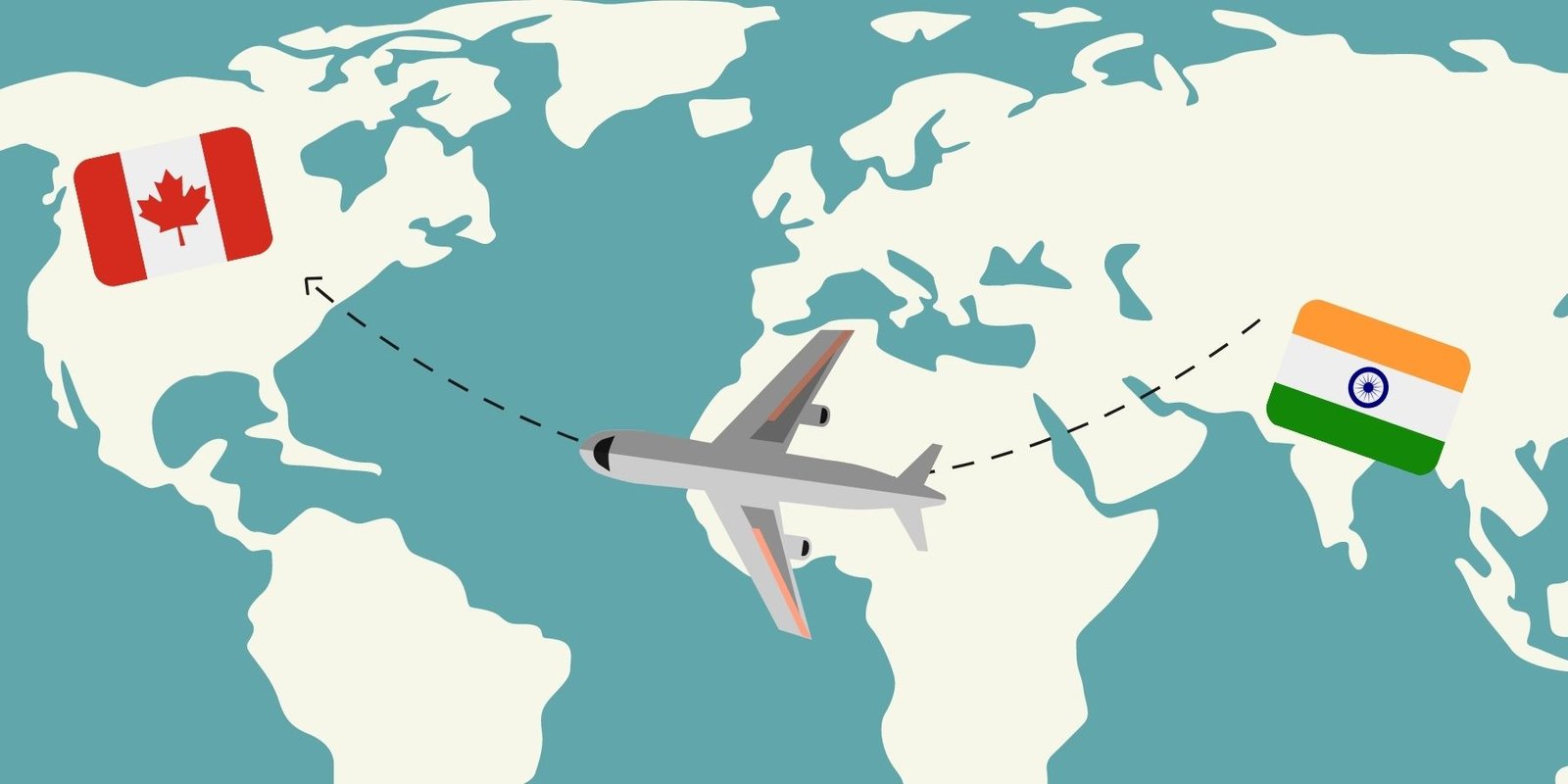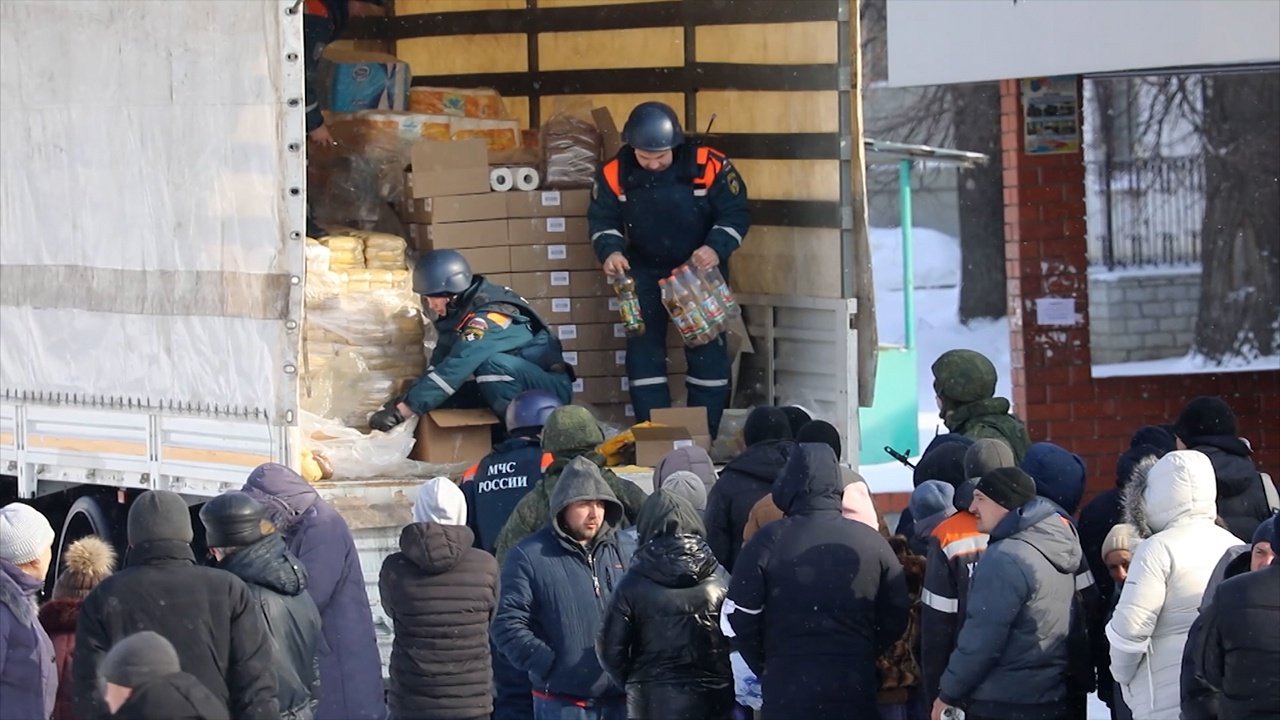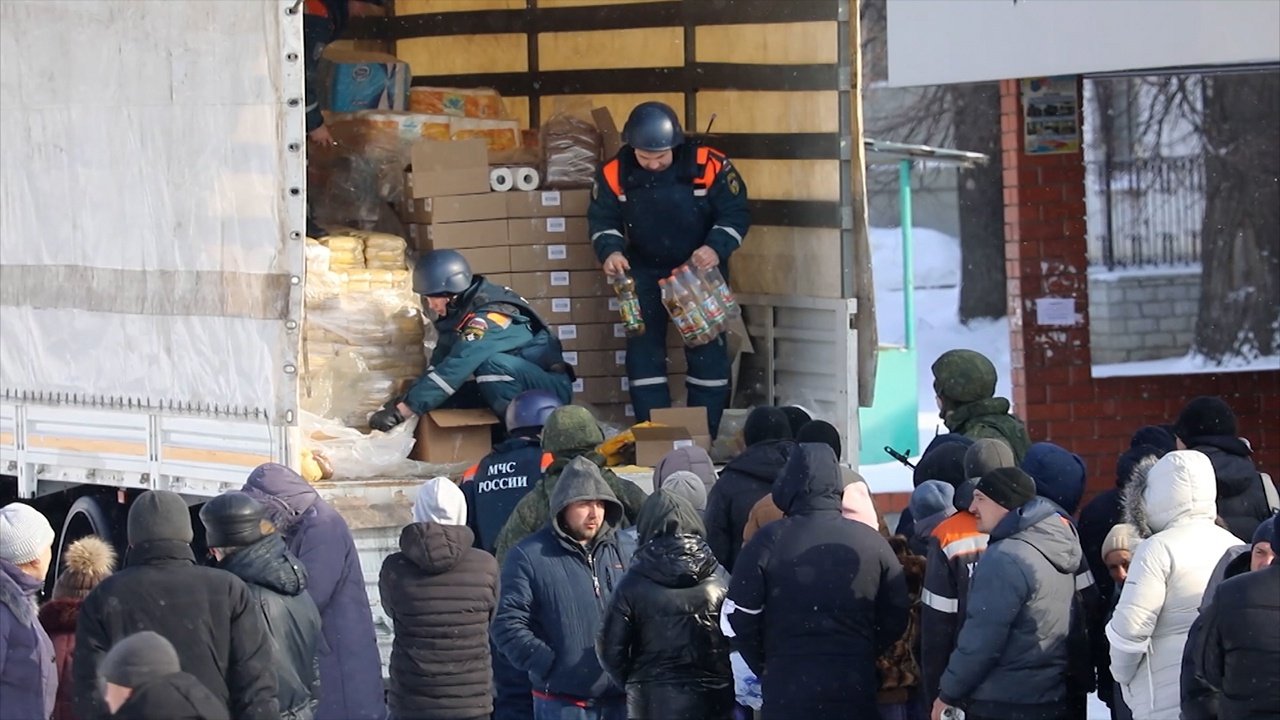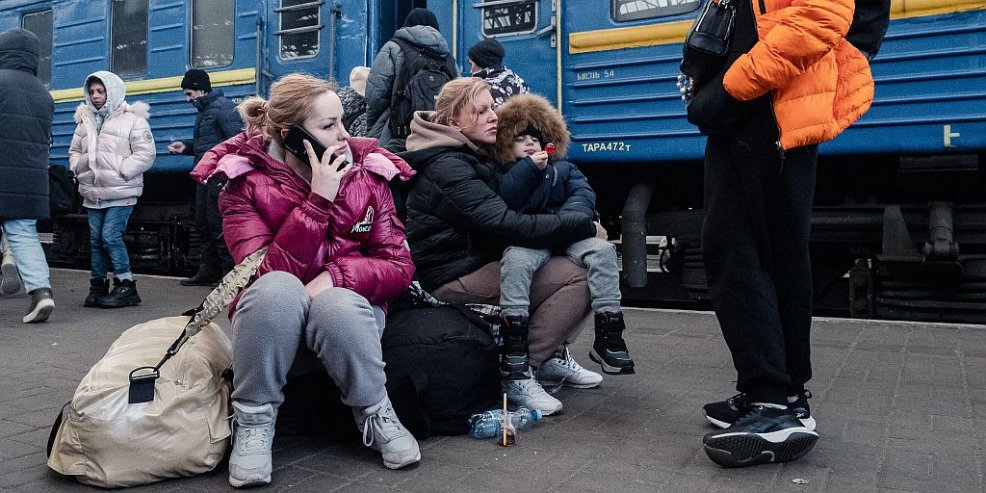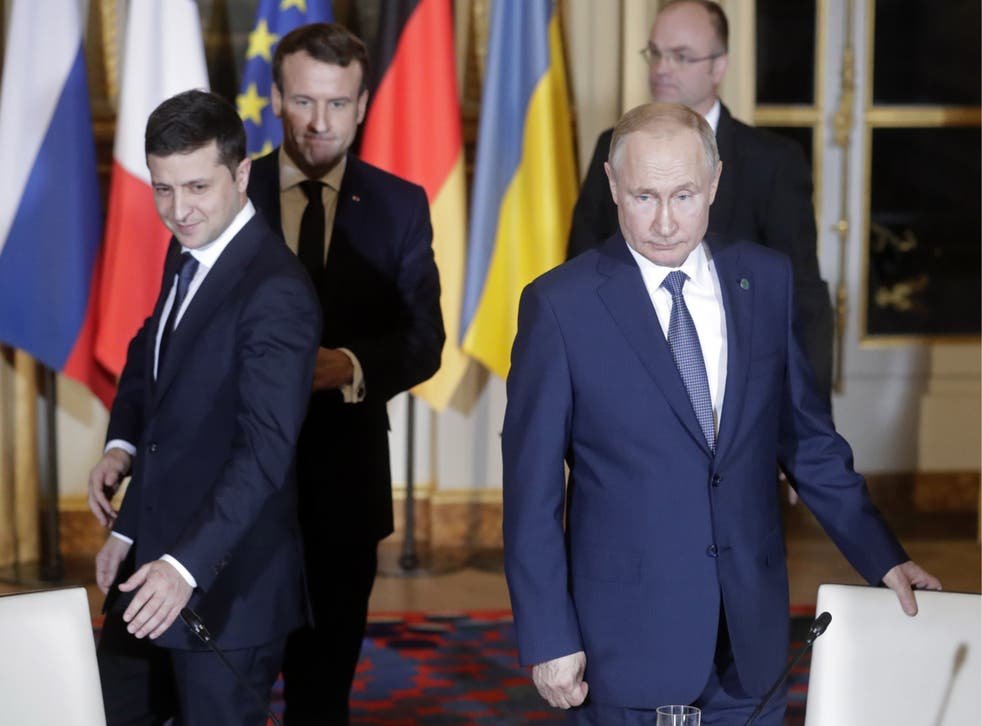Indians will Never Forget nor Forgive the series of Terrorist attacks Master minded and carried out by Pakistani Terrorists on Mumbai, the Commercial Capital of India 12 years ago on 26/11/2008.

Terrorist Nation Pakistan which was a born enemy of India, had been constantly needling India. It was 12 years back on 26/11/2008 that Pakistan sent its terrorists to carry out deadly attacks in the financial Capital of India, Mumbai and kill innocent civilians including women and children.
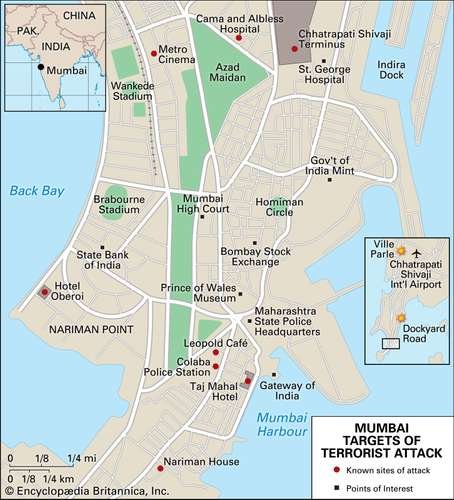
Terrorist Nation Pakistan sent 10 Terrorists of a UN designated Terrorist Organization Lashkar-e-Taiba, based in Pakistan, and carried out 12 coordinated shooting and bombing attacks lasting four days across Mumbai. The attacks, which drew widespread global condemnation, began on Wednesday 26 November and lasted until Saturday 29-November 2008. At least 166 people including 6 US Citizens were killed and more than 300 were wounded. 9 Terrorists were also killed by the Indian security forces.
Terrorists were trained in Pakistan
A group of 26 Terrorists, received training in marine warfare at a remote camp in mountainous Muzaffarabad in Pakistan. Part of the training was reported to have taken place on the Mangla Dam reservoir in Pakistan.
The Terrorist recruits went through the following stages of training, according to Indian and US media reports:
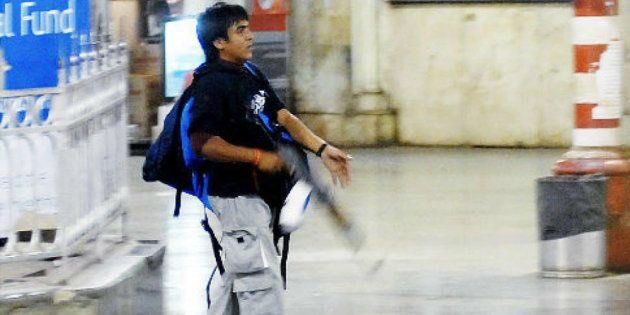
Psychological: Indoctrination to Islamist Jihadi ideas, including imagery of alleged atrocities suffered by Muslims in India, Chechnya, Palestine and across the globe.
Basic Combat: Lashkar’s basic combat training and methodology course, the Daura Aam.
Advanced Training: Selected to undergo advanced combat training at a camp near Mansehra, a course the organisation calls the Daura Khaas. According to an unnamed source at the US Defense Department this includes advanced weapons and explosives training supervised by retired personnel of the Pakistan Army, along with survival training and further indoctrination.
Commando Training: Finally, an even smaller group selected for specialised commando tactics training and marine navigation training given to the Fedayeen unit selected in order to target Mumbai.
From the 26 Terrorists, ten were handpicked for the Mumbai mission. They also received training in swimming and sailing, besides the use of high-end weapons and explosives under the supervision of LeT commanders. According to a media report citing an unnamed former Defence Department Official of the US, the intelligence agencies of the US had determined that former officers from Pakistan’s Army and their Intelligence agency Inter-Services Intelligence ISI assisted actively and continuously in training. They were given blueprints of all the four targets – The Taj Mahal Palace Hotel, Oberoi Trident, Nariman House and Chhatrapati Shivaji Terminus.
Attacks in Mumbai
The first events were detailed around 20:00 Indian Standard Time (IST) on 26 November, when 10 men in inflatable speedboats came ashore at two locations in Colaba. They reportedly told local Marathi-speaking fishermen who asked them who they were to “mind their own business” before they split up and headed two different ways. The fishermen’s subsequent report to police department received little response and local police were helpless.
Chhatrapati Shivaji Maharaj Terminus
The Chhatrapati Shivaji Maharaj Terminus (CSMT) was attacked by two Pakistani Terrorists, Ismail Khan and Ajmal Kasab. Terrorist Kasab was later caught alive by the police and identified by eyewitnesses. The attacks began around 21:30 when the two Terrorists entered the passenger hall and opened fire using AK-47 rifles. The 2 Terrorists killed 58 people and injured 104 others, their assault ending at about 22:45.
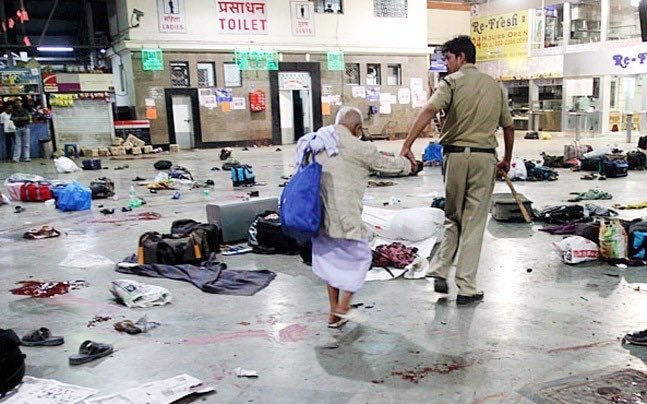
Security forces and emergency services arrived shortly afterwards. Announcements by a railway announcer, Vishnu Dattaram Zende, alerted passengers to leave the station and saved scores of lives.

The two Terrorists fled the scene and fired at pedestrians and police officers in the streets, killing eight police officers. The attackers passed a police station. Knowing that they were outgunned against the heavily armed terrorists, the police officers at the station, instead of confronting the terrorists, decided to switch off the lights and secure the gates. The Terrorists then headed towards Cama Hospital with intent to kill patients, but the hospital staff locked all of the patient wards. A team of the Mumbai Anti-Terrorist Squad searched the Chhatrapati Shivaji Terminus and then left in pursuit of Kasab and Khan. Kasab and Khan opened fire on the vehicle in a lane next to the hospital, and received return fire in response. 4 officers were killed. The only survivor, Constable Arun Jadhav, was severely wounded. Kasab and Khan seized the police vehicle but later abandoned it and seized a passenger car instead. They then ran into a police roadblock, which had been set up after Jadhav radioed for help. A gun battle then ensued in which Khan was killed and Kasab was wounded. After a physical struggle, Kasab was arrested. A police officer, Tukaram Omble was also killed when he ran in front of Kasab to shoot him
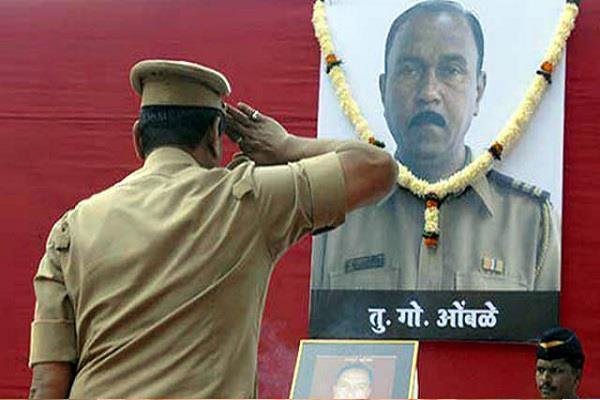
Leopold Cafe
The Leopold Cafe, a popular restaurant and bar on Colaba Causeway in South Mumbai, was one of the first sites to be attacked. Two Pakistani Terrorists, Shoaib alias Soheb and Nazir alias Abu Umer, opened fire on the cafe on the evening of 26 November between 9.30 and 9.48 pm, killing 10 people (including some foreigners) and injuring many more.
Bomb blasts in taxis

There were two explosions in taxis caused by timer bombs. The first one occurred at 22:40 at Vile Parle, killing the driver and a passenger. The second explosion took place at Wadi Bunder between 22:20 and 22:25. Three people, including the driver of the taxi were killed, and about 15 others were injured.
Taj Mahal Palace Hotel and Oberoi Trident
The two hotels, The Taj Mahal Palace Hotel and the Oberoi Trident, were among the four locations targeted. Six explosions were reported at the Taj hotel – one in the lobby, two in the elevators, three in the restaurant – and one at the Oberoi Trident. At the Taj, firefighters rescued 200 hostages from windows using ladders during the first night. Media initially reported on the morning of 27 November 2008 that the hostage situation at the Taj Hotel had been resolved and quoted the police chief of Maharashtra stating that all hostages were freed; however, it was learned later that day that there were still two attackers holding hostages, including foreigners, in the Taj Hotel.
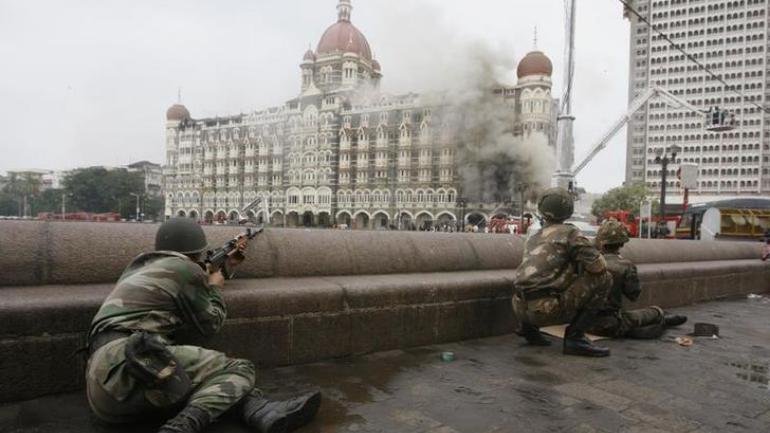
A number of European Parliament Committee on International Trade delegates were staying in the Taj hotel when it was attacked, but none of them were injured. British Conservative Member of the European Parliament (MEP) Sajjad Karim (who was in the lobby when attackers initially opened fire there) and German Social Democrat MEP Erika Mann were hiding in different parts of the building. Also reported present was Spanish MEP Ignasi Guardans, who was barricaded in a hotel room. Another British Conservative MEP, Syed Kamall, reported that he along with several other MEPs left the hotel and went to a nearby restaurant shortly before the attack. Kamall also reported that Polish MEP Jan Masiel was thought to have been sleeping in his hotel room when the attacks started, but eventually left the hotel safely. Kamall and Guardans reported that a Hungarian MEP’s assistant was shot. Also caught up in the shooting were the President of Madrid, Esperanza Aguirre, while checking in at the Oberoi Trident, and Indian MP N. N. Krishnadas of Kerala and Gulam Noon while having dinner at a restaurant in the Taj Hotel.
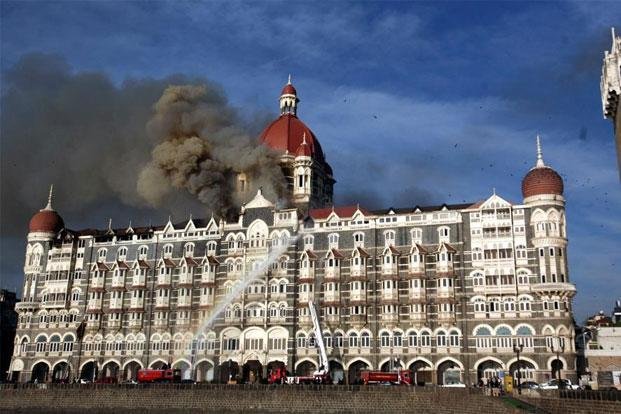
Attack on Nariman House
Nariman House, a Chabad Lubavitch Jewish centre in Colaba known as the Mumbai Chabad House, was taken over by two Terrorists and several residents were held hostage. Police evacuated adjacent buildings and exchanged fire with the Pakistani Terrorists, wounding one. Local residents were told to stay inside. The attackers threw a grenade into a nearby lane, causing no casualties.
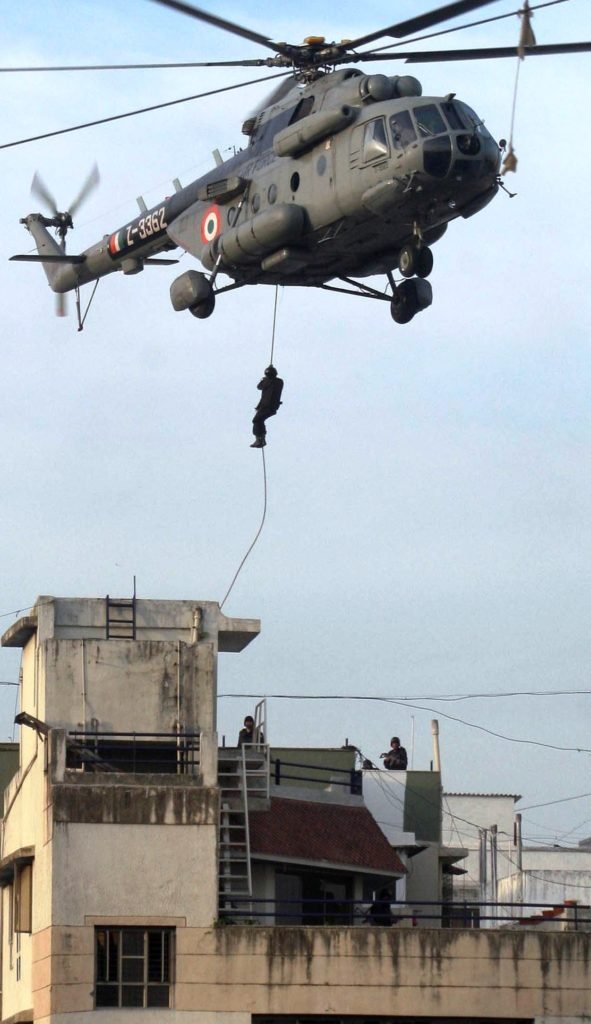
NSG commandos arrived from Delhi, and a naval helicopter took an aerial survey. During the first day, 9 hostages were rescued from the first floor. The following day, the house was stormed by NSG commandos fast-roping from helicopters onto the roof, covered by snipers positioned in nearby buildings. After a long battle, one NSG commando Havaldar Gajender Singh Bisht and both perpetrators were killed.

Rabbi Gavriel Holtzberg and his wife Rivka Holtzberg, who was six months pregnant, were murdered with four other hostages inside the house by the Pakistani Terrorists. According to radio transmissions picked up by Indian intelligence, the Pakistani Terrorists “would be told by their handlers in Pakistan that the lives of Jews were worth 50 times those of non-Jews”. Injuries on some of the bodies indicated that they may have been tortured
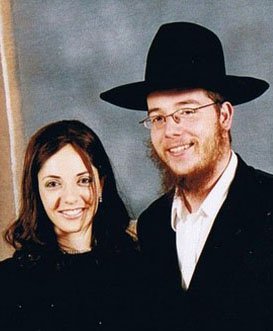
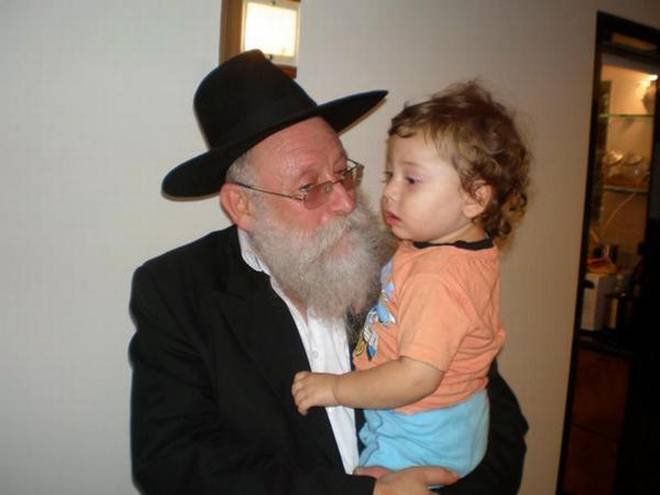

NSG raid
During the attacks, both hotels were surrounded by Rapid Action Force personnel and Marine Commandos (MARCOS) and National Security Guards (NSG) commandos. When reports emerged that Pakistani Terrorists were receiving television broadcasts, feeds to the hotels were blocked. Security forces stormed both hotels, and all nine Terrorists were killed by the morning of 29 November. Major Sandeep Unnikrishnan of the NSG was killed during the rescue of Commando Sunil Yadav, who was hit in the leg by a bullet during the rescue operations at Taj. 32 hostages were killed at the Oberoi Trident.
NSG commandos then took on the Nariman house, and a Naval helicopter took an aerial survey. During the first day, 9 hostages were rescued from the first floor. The following day, the house was stormed by NSG commandos fast-roping from helicopters onto the roof, covered by snipers positioned in nearby buildings. NSG Commando Havildar Gajender Singh Bisht, who was part of the team that fast-roped onto Nariman House, died after a long battle in which both perpetrators were also killed. By the morning of 28 November, the NSG had secured the Jewish outreach centre at Nariman House as well as the Oberoi Trident hotel. They also incorrectly believed that the Taj Palace and Towers had been cleared of attackers, and soldiers were leading hostages and holed-up guests to safety, and removing bodies of those killed in the attacks. However, later news reports indicated that there were still two or three Terrorists in the Taj, with explosions heard and gunfire exchanged. Fires were also reported at the ground floor of the Taj with plumes of smoke arising from the first floor. The final operation at the Taj Palace hotel was completed by the NSG commandos at 08:00 on 29 November, killing three Terrorists and resulting in the conclusion of the attacks. The NSG rescued 250 people from the Oberoi, 300 from the Taj and 60 people (members of 12 different families) from Nariman House. In addition, police seized a boat filled with arms and explosives anchored at Mazgaon dock off Mumbai harbour.
Attribution
The Mumbai attacks were planned and directed by Pakistani Terrorist Organisation Lashkar-e-Taiba terrorists inside Pakistan, and carried out by 10 armed Terrorists trained and sent to Mumbai and directed from inside Pakistan via mobile phones and VoIP.
In July 2009 Pakistani authorities confirmed that LeT plotted and financed the attacks from LeT camps in Karachi and Thatta. In November 2009, Pakistani authorities charged seven men they had arrested earlier, of planning and executing the assault.
Mumbai police department originally identified 37 suspects—including two Pakistani army officers—for their alleged involvement in the plot. All but two of the suspects, many of whom are identified only through aliases, are Pakistani. Two more suspects arrested in the United States in October 2009 for other attacks were also found to have been involved in planning the Mumbai attacks. One of these men, Pakistani American David Headley (born Daood Sayed Gilani), was found to have made several trips to India before the attacks and gathered video and GPS information on behalf of the plotters.
In April 2011, the United States issued arrest warrants for four Pakistani men as suspects in the attack. The men, Sajid Mir, Abu Qahafa, Mazhar Iqbal alias “Major Iqbal”, are believed to be members of Lashkar-e-Taiba and helped plan and train the attackers.
Pakistan’s Hands socked in blood of Civilians
Pakistan initially denied that Pakistanis were responsible for the attacks, blaming plotters in Bangladesh and Indian criminals, a claim refuted by India, and saying they needed information from India on other bombings first.
Pakistani authorities finally agreed that Ajmal Kasab was a Pakistani on 7 January 2009, and registered a case against three other Pakistani nationals.
The Indian government supplied evidence to Pakistan and other governments, in the form of interrogations, weapons, and call records of conversations during the attacks. In addition, Indian government officials said that the attacks were so sophisticated that they must have had official backing from Pakistani “agencies”, an accusation denied by Pakistan.
Under US and UN pressure, Pakistan arrested a few members of Jamaat ud-Dawa and briefly put its founder under house arrest, but he was found to be free a few days later. A year after the attacks, Mumbai police continued to complain that Pakistani authorities were not co-operating by providing information for their investigation. Meanwhile, journalists in Pakistan said security agencies were preventing them from interviewing people from Kasab’s village. The then Home Minister P. Chidambaram said the Pakistani authorities had not shared any information about American suspects Headley and Rana, but that the FBI had been more forthcoming.
An Indian report, summarising intelligence gained from India’s interrogation of David Headley, was released in October 2010. It alleged that Pakistan’s intelligence agency (ISI) had provided support for the attacks by providing funding for reconnaissance missions in Mumbai. The report included Headley’s claim that Lashkar-e-Taiba’s chief military commander, Zaki-ur-Rahman Lakhvi, had close ties to the Pakistan’s intelligence agency ISI. He alleged that “every big action of LeT is done in close coordination with [the] Pakistan’s intelligence agency ISI.”

In 2018, during an interview with newspaper Dawn, Pakistan’s former Prime Minister Nawaz Sharif reportedly indirectly accepted Pakistan’s involvement in not preventing the Mumbai attacks.
Investigations
According to investigations, the Terrorists traveled by sea from Karachi, Pakistan, across the Arabian Sea, hijacked the Indian fishing trawler ‘Kuber’, killed the crew of four, then forced the captain to sail to Mumbai. After murdering the captain, the attackers entered Mumbai on a rubber dinghy. The captain of ‘Kuber’, Amar Singh Solanki, had earlier been imprisoned for six months in a Pakistani jail for illegally fishing in Pakistani waters. The Terrorists stayed and were trained by the Lashkar-e-Taiba in a safehouse at Azizabad near Karachi before boarding a small boat for Mumbai.
David Headley was a member of Lashkar-e-Taiba, and between 2002 and 2009 Headley travelled extensively as part of his work for LeT. Headley received training in small arms and countersurveillance from LeT, built a network of connections for the group, and was chief scout in scoping out targets for Mumbai attack having allegedly been given $25,000 in cash in 2006 by a Pakistani Intelligene Agency ISI officer known as Major Iqbal, The officer also helped him arrange a communications system for the attack, and oversaw a model of the Taj Hotel so that gunmen could know their way inside the target, according to Headley’s testimony to Indian authorities. Headley also helped ISI recruit Indian agents to monitor Indian troop levels and movements, according to a US official. At the same time, Headley was also an informant for the US Drug Enforcement Administration, and Headley’s wives warned American officials of Headley’s involvement with LeT and his plotting attacks, warning specifically that the Taj Hotel may be their target.
US officials believed that the Pakistani Intelligence Agency Inter-Services Intelligence (I.S.I.) officers provided support to Lashkar-e-Taiba Terrorists who carried out the attacks. Disclosures made by former American intelligence contractor Edward Snowden in 2013 revealed that the Central Intelligence Agency (CIA) had intercepted communications between the Lashkar boat and the LeT headquarters in Pakistan-administered Kashmir and passed the alert on to RAW on 18 November, eight days before the terrorists actually struck Mumbai.
The arrest of Zabiuddin Ansari alias Abu Hamza in June 2012 provided further clarity on how the plot was hatched. According to Abu Hamza, the attacks were previously scheduled for 2006, using Indian youth for the job. However, a huge cache of AK-47’s and RDX, which were to be used for the attacks, was recovered from Aurangabad in 2006, thus leading to the dismantling of the original plot. Subsequently, Abu Hamza fled to Pakistan and along with Lashkar commanders, scouted for Pakistani youth to be used for the attacks. In September 2007, 10 people were selected for the mission. In September 2008, these people tried sailing to Mumbai from Karachi, but couldn’t complete their mission due to choppy waters. These men made a second attempt in November 2008, and successfully managed to execute the final attacks. David Headley’s disclosures, that three Pakistani army officers were associated with the planning and execution of the attack were substantiated by Ansari’s revelations during his interrogation.
After Ansari’s arrest, Pakistan’s Foreign Office claimed they had received information that up to 40 Indian nationals were involved in the attacks.
Method
The Pakistani Terrorists had planned the attack several months ahead of time and knew some areas well enough to vanish and reappear after security forces had left. Several sources have quoted Kasab telling the police that the group received help from Mumbai residents. The Pakistani Terrorists used at least three SIM cards purchased on the Indian side of the border with Bangladesh. There were also reports of a SIM card purchased in the US state of New Jersey, if this is the case, then this would go back to Iraqi Intelligence Services and Al Qaeda from 9/11 or Jemmah Ismaliyah and Egyptian Islamic Jihad through Iraqi Intelligence from Saddam Hussein’s old network of Terrorists that was never proved. Police had also mentioned that Faheem Ansari, an Indian Lashkar operative who had been arrested in February 2008, had scouted the Mumbai targets for the November attacks. Later, the police arrested two Indian suspects, Mikhtar Ahmad, who is from Srinagar in Kashmir, and Tausif Rehman, a resident of Kolkata. They supplied the SIM cards, one in Calcutta, and the other in New Delhi.
The Pakistani Terrorists used a satellite phone and cell phones to talk to each other as well as their handlers that were based in Pakistan. In transcripts intercepted by Indian authorities between the Pakistani Terrorists and their Pakistani handlers, the Pakistani handlers provided the Terrorists with encouragement, tactical advice, and information gained from media coverage. The Pakistani Terrorists used both personal cell phones and those obtained from their victims to communicate with each other and the news media. Although the Pakistani Terrorists were encouraged to murder hostages, the Terrorists were in communication with the news media via cell phones to make demands in return for the release of hostages. This was believed to be done in order to further confuse Indian authorities that they were dealing with primarily a hostage situation.
Type 86 Grenades made by China’s state-owned Norinco were used in the attacks.
There were also indications that the Pakistani Terrorists had been taking steroids. The Terrorist Kasab who survived said that the Pakistani Terrorists had used Google Earth to familiarize themselves with the locations of buildings used in the attacks.
There were 10 gunmen, nine of whom were subsequently shot dead and one captured by security forces. Witnesses reported that they seemed to be in their early twenties, wore black T-shirts and jeans, and that they smiled and looked happy as they shot their victims.
It was initially reported that some of the attackers were British citizens, but the Indian government later stated that there was no evidence to confirm this. Similarly, early reports of 12 Terrorists were also later shown to be incorrect.
On 6 April 2010, the Home Minister of Maharashtra State, which includes Mumbai, informed the Assembly that the bodies of the nine killed Pakistani gunmen from the 2008 attack on Mumbai were buried in a secret location in January 2010. The bodies had been in the mortuary of a Mumbai hospital after Muslim clerics in the city refused to let them be buried on their grounds.
Who were the attackers?
Only one of the 10 Pakistani Terrorists, Ajmal Kasab, survived the attack. He was hanged in Yerwada jail in 2012. The other nine Pakistani Terrorists were killed during the onslaught were Hafiz Arshad alias Abdul Rehman Bada, Abdul Rahman Chhota, Javed alias Abu Ali, Fahadullah alias Abu Fahad, Ismail Khan alias Abu Ismail, Babar Imran alias Abu Akasha, Nasir alias Abu Umar, Nazir alias Abu Umer and Shoaib alias Abu Soheb. According to scholar Saroj Kumar Rath, three local Indians, Basheer, Sabahuddin Ahmed and Fahim Ansari, helped the attackers in carrying out the Mumbai attacks. David Headley was supported by Basheer, who arranged the travel documents for him.

Arrests
Ajmal Kasab was the only Pakistani Terrorist arrested alive by police. He deposed to Mumbai Police that he had come to India, “to see Amitabh Bachchan’s bungalow”, and he was apprehended by the Mumbai Police, when he was outside the bungalow. Much of the information about the Terrorists’ preparation, travel, and movements comes from his confessions to the Mumbai police.
On 12 February 2009 Pakistan’s Interior Minister Rehman Malik said that Pakistani national Javed Iqbal, who acquired VoIP phones in Spain for the Mumbai attack Terrorists, and Hamad Ameen Sadiq, who had facilitated money transfer for the attack, had been arrested. Two other men known as Khan and Riaz, but whose full names were not given, were also arrested. Two Pakistanis were arrested in Brescia, Italy (east of Milan), on 21 November 2009, after being accused of providing logistical support to the terrorist attacks and transferring more than US$200 to Internet accounts using a false ID. They had Red Corner Notices issued against them by Interpol for their suspected involvement and it was issued after the last year’s strikes.
In October 2009, two Chicago men were arrested and charged by the FBI for involvement in “terrorism” abroad, David Coleman Headley and Tahawwur Hussain Rana. Headley, a Pakistani-American, was charged in November 2009 with scouting locations for the 2008 Mumbai attacks. Headley is reported to have posed as an American Jew and is believed to have links with militant Islamist groups based in Bangladesh. On 18 March 2010, Headley pleaded guilty to a dozen charges against him thereby avoiding going to trial.
In December 2009, the FBI charged Abdur Rehman Hashim Syed, a retired major in the Pakistani army, for planning the terrorist attacks in association with Headley.
On 15 January 2010, in a successful snatch operation R&AW agents nabbed Sheikh Abdul Khwaja, one of the handlers of the 26/11 attacks, chief of HuJI India operations and a most wanted suspect in India, from Colombo, Sri Lanka, and brought him over to Hyderabad, India for formal arrest.
On 25 June 2012, the Delhi Police Department arrested Zabiuddin Ansari alias Abu Hamza, one of the key suspects in the attack at the Indira Gandhi International Airport in New Delhi. His arrest was touted as the most significant development in the case since Kasab’s arrest. Security agencies had been chasing him for three years in Delhi. Ansari is a Lashker-e-Taiba terrorist and the Hindi tutor of the 10 Pakistani Terrorists who were responsible for the Mumbai attacks in 2008. He was apprehended, after he was arrested and deported to India by Saudi Intelligence officials as per official request by Indian authorities. After Ansari’s arrest, investigations revealed that in 2009 he allegedly stayed for a day in a room in Old Legislators’s Hostel, belonging to Fauzia Khan, a former MLA and minister in Maharashtra Government. The minister, however, denied having any links with him. Home Minister P. Chidambaram asserted that Ansari was provided a safe place in Pakistan and was present in the control room, which could not have been established without active State support. Ansari’s interrogation further revealed that Sajid Mir and a Pakistani Army major visited India under fake names as cricket spectators to survey targets in Delhi and Mumbai for about a fortnight.
International Condemnation of Terrorist Nation Pakistan
International reaction for the attacks was widespread, with many countries and international organisations condemning the attacks and expressing their condolences to the civilian victims. Many important personalities around the world also condemned the attacks.
Media coverage highlighted the use of social media and social networking tools, including Twitter and Flickr, in spreading information about the attacks. In addition, many Indian bloggers offered live textual coverage of the attacks. A map of the attacks was set up by a web journalist using Google Maps. The New York Times, in July 2009, described the event as “what may be the most well-documented terrorist attack anywhere”.
In November 2010, families of American victims of the attacks filed a lawsuit in Brooklyn, New York, naming Lt. Gen. Ahmed Shuja Pasha, chief of the ISI, as being complicit in the Mumbai attacks.
Indians will Never Forget Never Forgive Pakistan
After this deadly Terrorist attack by Pakistan killing 166 civilians, the anger in Indian Public could be seen across India that time. Everyone criticized the then Indian Government ruled by Congress Party for its failure to prevent the terrorist attacks and failure to concentrate on India’s security.
Indian Citizens demands revenge of many terrorist attacks in last several decades killing thousands of civilians including women and Children. People asked Indian Government to strengthen its External Intelligence Agencies to do revenge attacks inside Pakistan on terrorist camps and eliminate all the perpetrators and the Terrorist leaders inside Pakistan.
As a result of the public voice India has successfully conducted a couple of surgical strikes inside Pakistan. However despite these successes, Indian citizens are yet not satisfied. They want India to adopt Israel like offensive and take revenge of all the attacks.
We talked to a few people in India. One of the person said, “Pakistan is a Bankrupt Failed Economy. Pakistan cannot afford armed conflict involving army regulars to fight a war with India. Hence Pakistan has adopted a low cost proxy war by delegating the war fighting to these Jihadi Islamist Terrorists. Every Madrasa (Educational Institute imparting Islamic religious education) is producing more and more terrorists throughout Pakistan. Pakistan is a failed economy. In order to divert the public attention from its economic failure, they keep inciting their illiterate public with Jihadist hate mongering speeches. Illiterate people of Pakistan are big fools to die for promise of 72 virgins by bigger fools and that they are never gonna get.”
What he said we already covered in our previous articles Whenever Pakistan Economy In Shambles, Kashmir Heats Up : Kashmir Updates.
We also covered about Jihad fervor in Pakistan in our previous article Pakistan Jihad Terrorist Factories On The Boil. Jihad Fervor Grips Pakistanis
Another person said that they want that for every one Indian killed by Pakistan, there should be 10 Pakistan Army men should be killed as a revenge. Pakistan should no longer be able to take advantage of the proxy war that it had been fighting on Indian Soil. Now the war needs to be taken and fought on Pakistan Soil. Unless Pakistan Army faces the heat, they will continue to send Terrorists and use plausible deniability always. We should now continuously hit Pakistan and take revenge of every Indian Killed multi-fold. The Revenge should be so big that Pakistan Army should pray Terrorists to not to touch any Indian. That should be the fear created in Pakistan by the Indian Army.”
Talking to this person in India made sense as a FATF Grey Listed Terrorist Nation Pakistan that had been used to needle India by sending terrorists, never expected the kind of response India under the leadership of Prime Minister Narendra Modi is currently giving to Pakistan. We hope Pakistan ends its Terrorist Factories that are exporting Terrorists worldwide including Afghanistan, India, the US, UK, Europe. That can only be achieved by isolating Pakistan by putting it under the FATF Blacklist.
Follow us at:-
Twitter Handle: @newscomworld
Instagram Handle: @newscomworld
Parler Handle: @NewsComWorld
Subscribe our : YouTube Channel https://www.youtube.com/channel/UCnKJQ3gFsRVWpvdjnntQoAA
Like our Facebook Page https://www.facebook.com/NewsComWorld
2,317 total views




